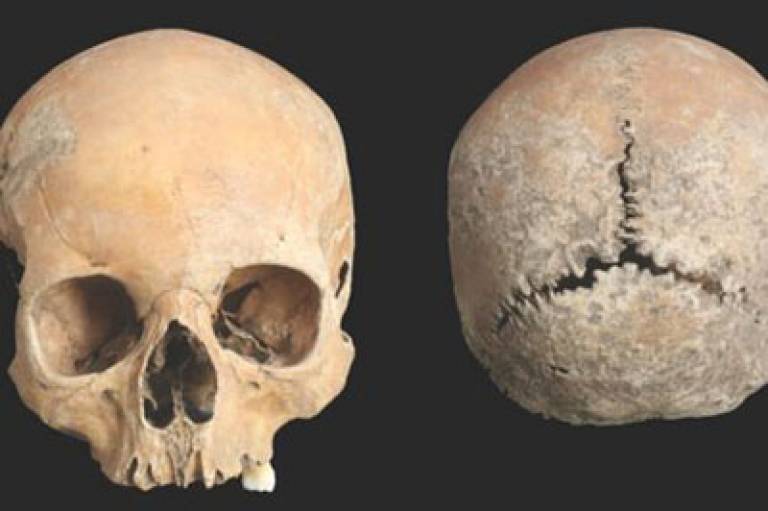Intentional facial mutilation in Anglo-Saxon England
27 October 2020
Collaborative research published in Antiquity, involving Andrew Reynolds, Garrard Cole and Tony Waldron from the UCL Institute of Archaeology, presents the first archaeological evidence for intentional facial mutilation from Anglo-Saxon England.

Intentional facial disfigurement is documented in archaeological contexts around the world. The mutilation documented in this study, which was inflicted upon a young female individual, comprised the removal of the nose, upper lip and possible scalping and may have been a ritual punishment for adultery.
Although such mutilations do not appear in the written record until the tenth century AD, the example reported in the study suggests that the practice may have emerged a century earlier. Radiocarbon dating has indicated that the cranium dates to around AD 776-899. The girl, believed to have been aged between 15 and 18, is unlilely to have survived for long after the injuries were inflicted as the wounds did not appear to have healed.
The skull, which was originally excavated at in Basingstoke in the 1960s ahead of the construction of a housing estate, had not been examined until its recent analysis at the Institute of Archaeology. As the skull was found without the remainder of the skeleton, the girl's head may have been cut off and displayed as a deterrent to others.
This case was examined in the context of a wider consideration of the motivations and significance of facial disfigurement in past societies.
According to lead author Garrard Cole (Honorary Researcher at the Institute):
“..the highly formalized nature of the woman's injuries suggest penalties for specific actions, such as sexual deviancy, or at least a perception of such."
Read more
Citation: Cole, G., Ditchfield, P., Dulias, K., Edwards, C., Reynolds, A., & Waldron, T. (2020). Summary justice or the King's will? The first case of formal facial mutilation from Anglo-Saxon England. Antiquity, 94(377), 1263-1277. doi:10.15184/aqy.2020.176
Media links
 Close
Close

